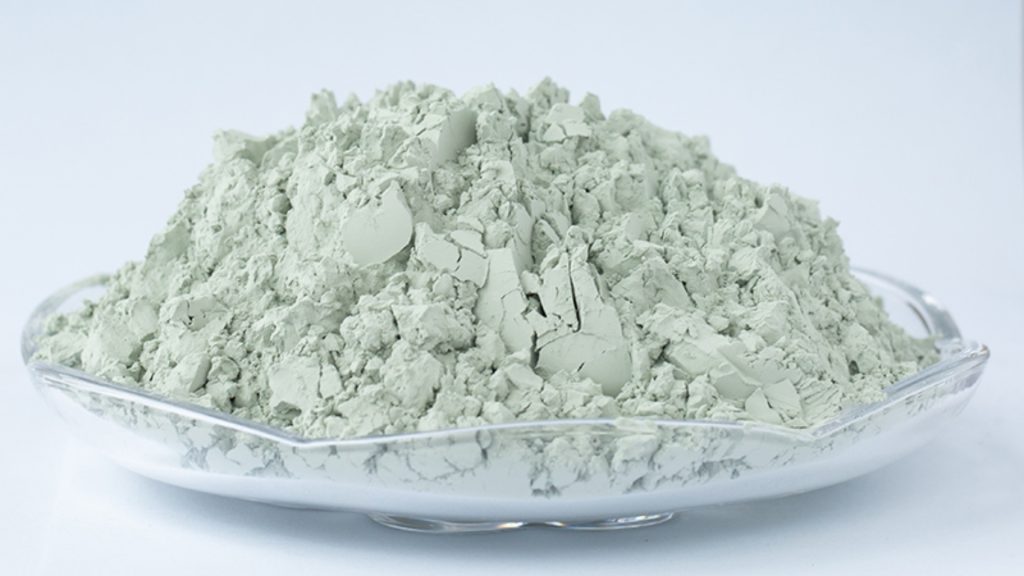The Unique Value of Green Silicon Carbide Micropowder in the Semiconductor Industry
The semiconductor industry has always been synonymous with high technology, with people often discussing high-end topics like photolithography machines and chip design. However, within this industry, some seemingly insignificant materials play a crucial role.
Green silicon carbide micropowder is one such material. Today, let’s discuss this special material, quietly working its way through semiconductor manufacturing.
Let me start with an interesting anecdote. Last year, I attended a semiconductor industry trade show. At a relatively unassuming booth, several engineers were enthusiastically discussing a piece of grinding equipment. Listening closely, I could hear them repeatedly mentioning “
green silicon carbide micropowder.” I was puzzled at the time; it sounded like a traditional industrial abrasive, so how could it be connected to precision semiconductors? Later, I realized that in this industry, the more basic the material, the more critical it is.

What exactly is green silicon carbide micropowder? Simply put, it’s a man-made superhard material, smelted in a high-temperature electric furnace from raw materials such as quartz sand and petroleum coke. It gets its name from its high purity and distinctive green color. Don’t underestimate these tiny particles; their hardness is second only to diamond, yet they possess superior thermal stability and chemical inertness.
In semiconductor manufacturing, wafer flatness directly determines chip yield. This brings us to the key skill of green silicon carbide micropowder: chemical mechanical polishing (CMP). Lao Zhang, a process engineer at a wafer fab, uses a vivid analogy: “It’s like giving a wafer a ‘facial treatment’—smoothing out bumps and unevenness without leaving scratches. Green silicon carbide micropowder is like the
microcrystalline particles in top-tier skincare—gentle yet effective.” Indeed, in chip manufacturing, even a few tenths of a micron of unevenness can cause a short or open circuit.
Thermal management is a persistent challenge in the semiconductor industry. As chip integration increases, heat dissipation becomes increasingly prominent. Green silicon carbide micropowder has a unique skill in this regard: adding it to thermally conductive materials significantly improves heat dissipation. A thermal engineer at a well-known chip company told me, “We now use a special green silicon carbide micropowder in our high-end thermal paste, which improves heat dissipation efficiency by over 20%. This is a lifesaver in the 5nm and 3nm process technologies.”
Green silicon carbide micropowder is even more indispensable in semiconductor equipment manufacturing. Many key components in lithography machines and etching machines, which can cost tens of millions of yuan, require extremely high machining precision. For example, the optical systems of lithography machines demand extremely high mirror flatness, necessitating the use of green silicon carbide micropowder for precision grinding. A veteran with 20 years of experience said, “Using this material is incredibly demanding. The particle size, concentration, and pH value all need to be precisely controlled; even the slightest deviation can affect the final result.”
It’s worth noting that with the rise of third-generation semiconductor materials, green silicon carbide micropowder has found a new application. Silicon carbide-based semiconductor devices themselves require green silicon carbide micropowder for grinding and polishing during processing. It’s an interesting cycle—using silicon carbide to process silicon carbide. The technical director of a semiconductor new materials company smiled and said, “It’s like using a diamond to cut a diamond; only like materials can truly understand each other.”
Green silicon carbide micropowder also plays a unique role in quality control. Semiconductor factories require regular equipment maintenance, especially cleaning of conveyor lines and reaction chambers. Because
green silicon carbide micropowder is chemically inert and does not introduce new contaminants, it is the preferred material for cleaning processes. A maintenance engineer revealed, “Compared to other abrasives, green silicon carbide micropowder does not leave metal ions on the inner walls of equipment, which is crucial for maintaining a clean environment in chip production.”
Of course, every material has room for improvement. The current challenges facing green silicon carbide micropowder primarily lie in cost control and quality consistency. The complex production process and high energy consumption contribute to its high price. Furthermore, consistency across batches is a key concern for users. However, several leading domestic companies are already addressing these issues, gradually narrowing the gap with imported products by improving production processes and quality management systems.
Looking ahead, as
semiconductor technology evolves toward smaller processes and higher levels of integration, demand for green silicon carbide micropowder will continue to grow. This is especially true in emerging fields such as artificial intelligence chips, 5G communication chips, and autonomous driving chips, which place even higher demands on processing precision and heat dissipation performance. This opens up a wider range of applications for green silicon carbide micropowder.
I remember an industry veteran saying, “The semiconductor industry is like an iceberg. What people see is only the chip design and large-scale manufacturing above the surface, while the materials, processes, and equipment beneath the surface are the foundation that supports the entire industry.” Green silicon carbide micropowder is an indispensable component of these foundational materials. It may not be as eye-catching as a lithography machine, but it is these “inconspicuous” materials that support the development of the entire semiconductor industry.
The next time you use a smartphone or drive a smart car, perhaps consider that behind these high-tech products lies the contribution of “unassuming” materials like green silicon carbide micropowder. After all, the progress of every industry is inseparable from these silent, dedicated “heroes behind the scenes.”
